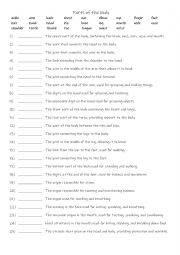
|
A1+-A2 25 parts of the body definitions
Learning these 25 body parts and their definitions is helpful for basic communication about health and daily activities. Knowing the names of body parts allows students to explain how they feel, describe symptoms to doctors, and understand instructions related to movement or health care. These words are also common in simple conversations and expre...
Level: elementary
Age: 8-100
Type:
Downloads: 117
|
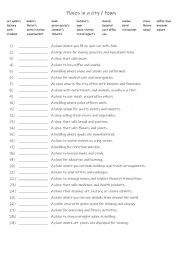
|
A1+-A2 27 places in a city or town
Students familiar themselves with the places in a town / city. Then they read the definitions and write the according place on the line provided. This worksheet could also be used as a speaking reinforcement activity for pairs and small groups- How often do you use this place ? What is the most important / best place that you use? Etc. Answers o...
Level: elementary
Age: 8-100
Type:
Downloads: 112
|
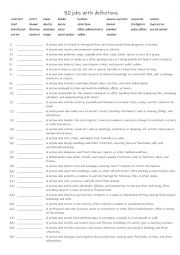
|
A1+-A2 30 jobs with definitions
Students write the name of the job being described. Answers on page 2.
Level: elementary
Age: 8-100
Type:
Downloads: 113
|
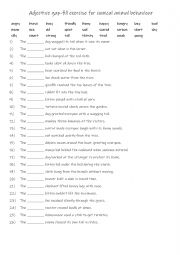
|
A1+-A2 Adjective gap-fill exercise for usual animal behaviour
After watching How funny animals behave on TV, I decided to make this worksheet to make it more interesting for students to associate some adjectives with animal traits. This worksheet is suitable for A1+-A2 students. Answers on page 2.
Level: elementary
Age: 8-100
Type:
Downloads: 114
|
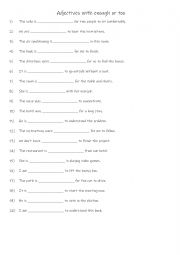
|
A1+-A2 Adjectives with enough or too
Students read the sentences to see which word is needed to complete the gap-fill. Answers on page 2.
Level: elementary
Age: 8-100
Type:
Downloads: 105
|
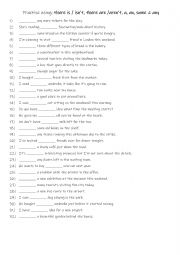
|
A1+-A2 Articles and quantifiers Practise using there is / isn�t, there are / aren�t, a, an, some & any
Learning the structures "there is / isn�t", "there are / aren�t", "a / an", "some", and "any" is essential for clear communication in English. They help students describe the existence or absence of things, specify quantities, and form both positive and negative sentences. "A" and "an" are used for singular, countable nouns, while "some" and "a...
Level: elementary
Age: 8-100
Type:
Downloads: 106
|
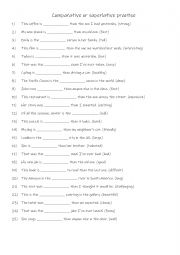
|
A1+-A2 Comparative or superlative practise
Students read the sentences, then complete the gap-fill with the correct form using the given adjective. Answers on page 2.
Level: elementary
Age: 8-100
Type:
Downloads: 113
|
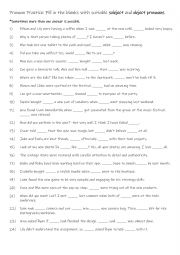
|
A1+-A2 Complete the sentences with the correct personal subject & object pronouns
Students read the sentences to see which type of personal pronoun or object pronoun is required to complete the gap-fill. Answers on page 2.
Level: elementary
Age: 8-100
Type:
Downloads: 120
|
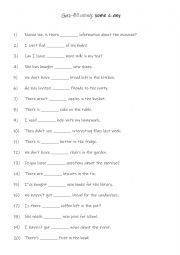
|
A1+-A2 Gap-fill using some & any (1)
Students read the sentences, then complete the gap-fill with some / any. Answers on page 2.
Level: elementary
Age: 8-100
Type: worksheet
Downloads: 107
|
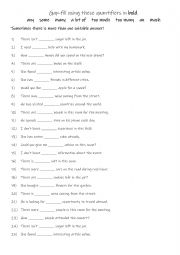
|
A1+-A2 Gap-fill using the 8 quantifiers
Quantifiers help students specify the amount or number of something. This precision allows them to convey their message more accurately. Using a range of quantifiers allows people to vary their language, making speech or writing more engaging and less repetitive. For instance, saying "a few" instead of always using "some" can make your communicatio...
Level: elementary
Age: 8-100
Type:
Downloads: 103
|












